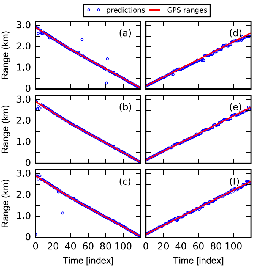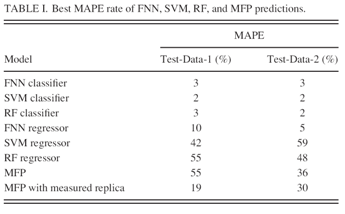In underwater acoustics, source localization is often solved with matched-field processing (MFP), which, however, the MFP is limited in some applications due to its sensitivity to the mismatch between model-generated replica fields and measurements.
Recently, NIU Haiqiang and his colleagues from USA present a source localization method based on machine learning. It is a data-driven method that learns source ranges directly from observed acoustic data.
By constructing a normalized sample covariance matrix, the pressure received by a vertical linear array is preprocessed by constructing a normalized sample covariance matrix and used as the input for three machine learning methods: feed-forward neural network (FNN), support vector machine (SVM), and random forest (RF). Then range estimation problem is solved both as a classification problem and as a regression problem.
To demonstrate the performance of these machine learning methods, the results of range estimation for the Noise09 experiment are compared for FNN, SVM, RF, and conventional matched-field processing. Figure 1 shows the best localization results on two data sets by the FNN, SVM, and RF classifiers with 66 frequencies. The corresponding lowest mean absolute percentage error (MAPE) is about 2-3% for these three methods.
For further comparison, the results for classifiers, regressors and conventional MFPs are summarized TABLE I. The lowest MAPE is achieved by the SVM classifier, with 2% on both data sets.Overall, the performance of these three machine learning algorithms is are comparable when solving range estimation as a classification problem, and outperforms the conventional MFPs and regressors.

Fig.1 Source localization as a classification problem. Range predictions on Test-Data-1 (a, b, c) and Test-Data-2 (d, e, f) by FNN, SVM and RF for 300-950 Hz with 10 Hz increment, i.e., 66 frequencies. (a),(d) FNN classifier, (b),(e) SVM classifier, (c),(f) RF classifier. (Image by NIU).

Reference:
NIU Haiqiang, Emma Reeves, Peter Gerstoft. Source Localization in an Ocean Waveguide Using Supervised Machine Learning. Journal of the Acoustical Society of America. (vol. 142, no. 3, pp. 1176-1188, September 2017). DOI: 10.1121/1.5000165.
Contact:
WANG Rongquan
Institute of Acoustics, Chinese Academy of Sciences, 100190 Beijing, China
E-mail: wangrongquan@mail.ioa.ac.cn


